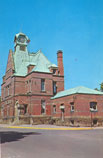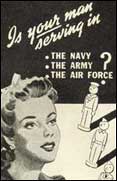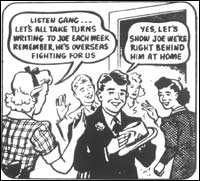 The original Post Office was taken over by the town as a civic building in 1956 and was restored in 2003 as part of Summerside City Hall. The crowning feature of the building is the clock tower, which was added in 1914. To read about the controversy surrounding the town clock during the war years, click here.
The original Post Office was taken over by the town as a civic building in 1956 and was restored in 2003 as part of Summerside City Hall. The crowning feature of the building is the clock tower, which was added in 1914. To read about the controversy surrounding the town clock during the war years, click here.There was no door-to-door mail delivery in Summerside so everyone had to go to the Post Office to check a rented box or to stand in line to receive any incoming letters or parcels. Of course people went not only to check for incoming mail, but also to send mail. It was always a busy spot with many people using the daily visit as a way to socialize with other townsfolk.
Many individuals made it a regular part of their daily lives to write letters to family members or to friends and acquaintances that were serving in the military. They realized the importance of sending news and offering words of encouragement. A manufacturer of stationery, Barber-Ellis of Canada Ltd., published a helpful booklet titled "Letters from Home," which was distributed locally by R. T. Holman Ltd.
After 1941, an overseas letter was sometimes written on special paper obtained for free from the Post Office. Called an airgraph, it was folded to form an envelope. These letters were sent to Toronto where they were microfilmed. The film was airmailed to Great Britain where the individual miniaturized letters were enlarged and placed in envelopes for delivery. In 1944 the Armed Forces Air Letter was introduced for its lightness and space saving features.
Telegrams were another means of wartime communication. A message arrived in the hands of an addressee after having been transmitted via electric signals and decoded by a person trained in the process. In Summerside the transmissions arrived at the CN office on Water Street and were changed to type and then hand delivered. The messages were usually of an immediate and urgent nature and during the war was most likely news of someone being killed, wounded or missing. It was not the type of communication that any family wanted to receive. The notice of death was generally followed by a typed form letter and perhaps later a personal letter from an officer, chaplain or friend who knew the deceased.
| Related Articles | Related Images | Related Memories | Related Websites | Inflation Calculator |
| Home Page | Site Map | Contact Us | Wyatt Heritage Properties |





